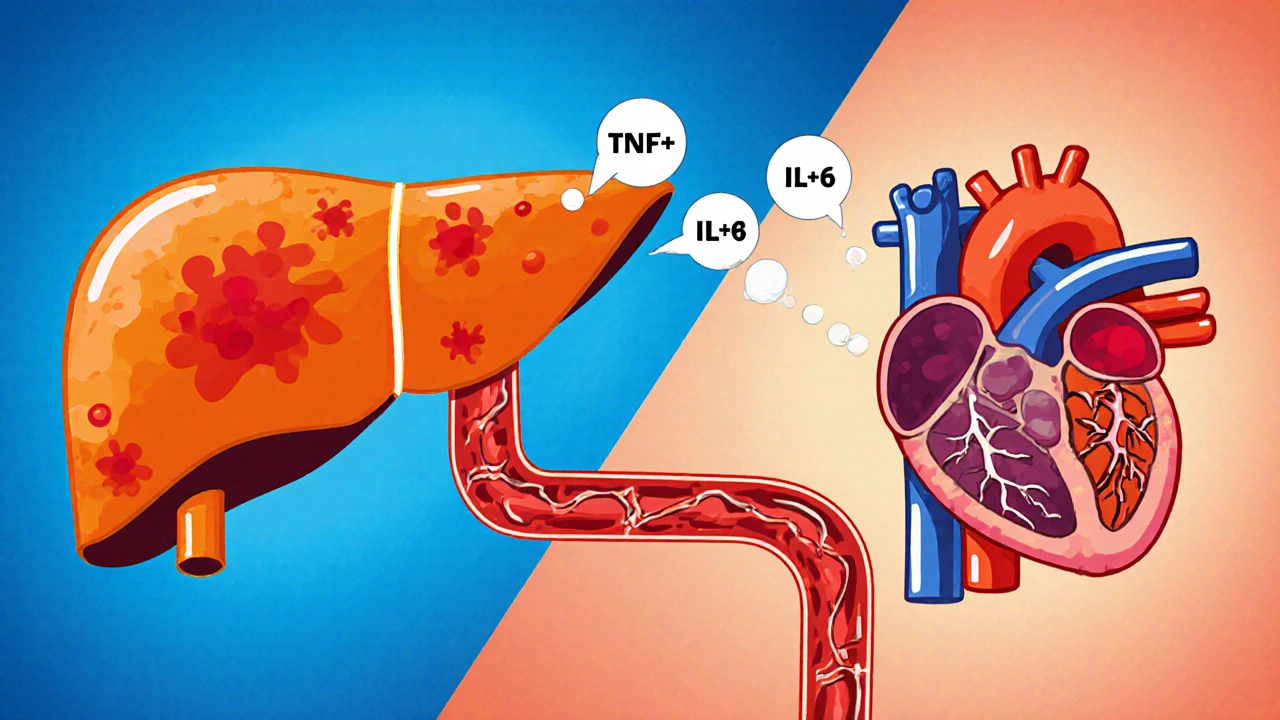Explore how chronic hepatitis B raises heart disease risk, the science behind it, and practical steps to protect your cardiovascular health.
Inflammation: What It Is and How to Keep It in Check
When dealing with Inflammation, the body's natural defense that causes swelling, redness, heat, and pain. Also known as inflammatory response, it kicks in when tissue is injured or infected. NSAIDs, non‑steroidal anti‑inflammatory drugs such as ibuprofen and naproxen are the go‑to meds that lower that swelling. The process relies heavily on Cytokines, proteins like interleukin‑6 and tumor‑necrosis factor that signal immune cells to act, which is why targeting them can calm the reaction. Finally, broader anti‑inflammatory medication, ranging from steroids to newer biologics, work by interrupting the cascade that fuels the pain and stiffness.
Why Understanding Inflammation Helps Choose the Right Treatment
First, knowing that inflammation can be acute or chronic changes how you respond. Acute inflammation is short‑lived, usually fixing a cut or infection in days. Chronic inflammation sticks around for weeks, months, or years, and it’s linked to conditions like arthritis, heart disease, and even some cancers. When you recognize the type, you can pick the right tool: a short course of NSAIDs for a sprained ankle, or a disease‑modifying drug for rheumatoid arthritis. The posts on this site walk you through comparisons—Mobic vs. other NSAIDs, Tylenol vs. ibuprofen, and even how to shop for cheap generic options safely—so you can match the drug to your specific situation. Second, the role of cytokines matters for newer therapies. Biologics that block interleukin‑6 or TNF‑alpha have become standard for severe autoimmune flare‑ups. If you’ve read our guide on anti‑inflammatory drugs, you’ll see which cytokine targets each class hits, letting you weigh benefits against infection risk. This knowledge also helps you understand side‑effects, like why steroids can raise blood sugar while NSAIDs might irritate the stomach. Third, pain relief isn’t just about cutting the fire; it’s also about staying functional. Some articles compare acetaminophen (Tylenol) with NSAIDs, highlighting that acetaminophen works more on the brain’s pain center and spares the gut, but doesn’t reduce swelling. Others dive into how certain supplements—like omega‑3 fatty acids—might lower low‑grade inflammation over time, offering a gentle, long‑term tweak. Together, these pieces form a roadmap: inflammation triggers cytokine release, cytokines drive swelling, and various anti‑inflammatory agents—whether NSAIDs, steroids, or biologics—interrupt that chain at different points. By seeing the connections, you can decide whether a quick over‑the‑counter painkiller, a prescription NSAID, or a specialty biologic fits your needs. Below, you’ll find a curated collection of articles that break down these options, compare safety and cost, and give step‑by‑step tips for buying the right medication online. Whether you’re hunting for a cheap generic ibuprofen, curious about how meloxicam stacks up against other NSAIDs, or want to know the latest on cytokine‑targeting treatments, the posts ahead have you covered.
Discover how mindfulness meditation can reduce stress, inflammation, and pain for diverticulitis sufferers, with practical steps, evidence, and tips.


